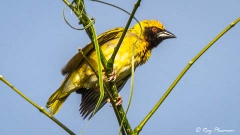Waxbills, Weavers and Accentors
The first gallery features Waxbills (Estrildidae) and Mannikins (Lonchurinae) from the Estrildid Finches Group. Most Singapore species inhabit woodland, wetland, and garden habitats. A second gallery displays Weavers (Ploceidae) and Accentors (Prunellidae) with images from two Indian Ocean tropical island and Singapore and a dunnock in Britain. See Taxonomy note below.
The first behaviours gallery shows some aspects of waxbill behaviour while the last three galleries feature photo essays of baya, golden and village weaver behaviour, respectively.
Waxbills and Mannikins
Waxbill and Mannikin Notes
Images of showcased species are ‘Red List 2019’ assessed as ‘Least Concern’. Waxbills are small short-billed oscines with rounded wings. Five species feature in the gallery including the Crimson Finch plumage dimorphic. Waxbills feed on grass seeds, so they often inhabit grassy areas in wooded or shrubby areas near water.
Weavers and Accentors
Weaver and Accentor Notes
Displayed species in the gallery are ‘Red List 2019’ assessed as ‘Least Concern’. Weavers are small to medium-sized birds that have slender to heavy-set bills. The four featured species are plumage dimorphic. The Baya Weaver is indigenous to Singapore while introduced species are the Red Fody, Golden-backed Weaver and Village Weaver Seychelles, Mauritius, and Singapore, respectively.
Waxbills Behaviour
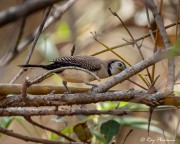
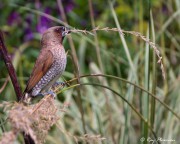
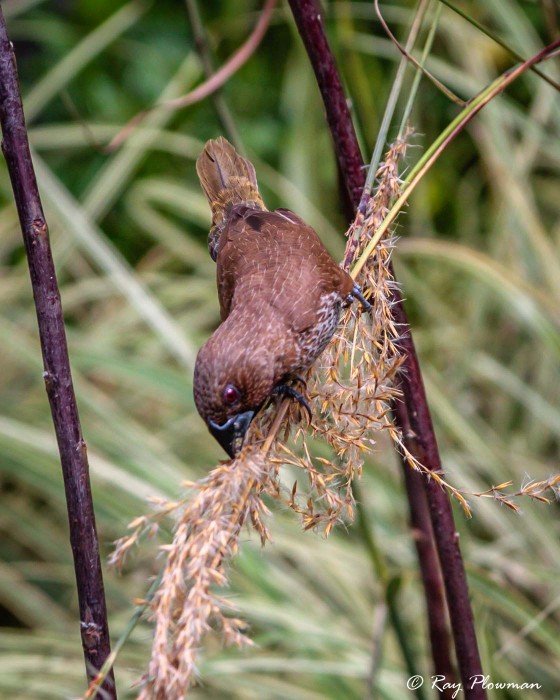
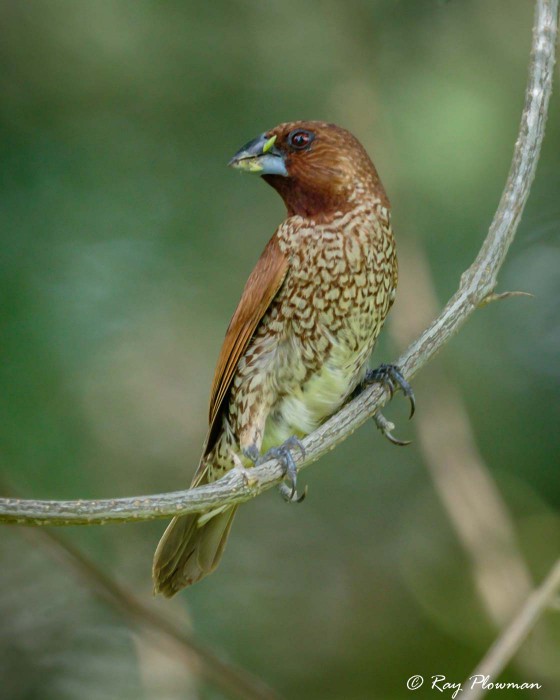
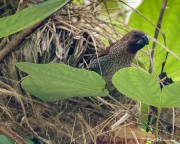
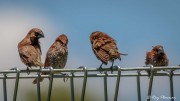
Weaver Behaviour
The Double-barred Finch appears to be eating tree shots. The munia images show feeding and nest-building behaviours of chestnut and scaly-breasted munias.
Baya Weaver Photo Essay
Baya Weaver Photo Essay Notes
The images show a small colony on Singapore ‘s Paula Urbin island. They were nesting in a single tree in a grassy area near water which is the typical habitat for these birds. Images show the tree where they were nesting, a group of nests and a single finished nest. Other photos show the male weaving the nest and interacting with the female.
Golden Weaver Photo Essay
Golden Weaver Photo Essay Notes
Photographed in Singapore’s Lorong Halus Wetland this introduced species, from Eastern Tropical Africa, is a very destructive weaver that decimated foliage on about seven trees in a small area of the wetland. Each tree had about ten to twenty nests. Images show males striping leaves, weaving nests, perched and flying behaviours.
Village Weaver Photo Essay
Village weavers are destructive introduced species to Mauritius from Central Tropical Africa. A small colony was nesting in a rural back garden in La Gaulette. Images show nest-building behaviour by the males and a female perched before flying to inspect a nest.
Accentor, Waxbill and Weaver Taxonomy
The figure showing a simplified family tree illustrates the taxonomy relevant to Waxbill, Weaver, and Accentor photo album.
The Esterid Clade placed in Core Passeroidea J Boyd’s Taxonomy in Flux Checklist refers. The families in the photo album comprise:
(a) Prunellidae (Accentors),
(b) Ploceidae (Weavers),
(c) And Estrildidae (Estrildid Finches) with two subfamilies: Lonchurinae (Mannikins) and Estrildinae (Waxbills).
Accentors are incertae sedis placement is controversial and could be in the Estrildid clade, the Passerid clade, or basal to both.







































